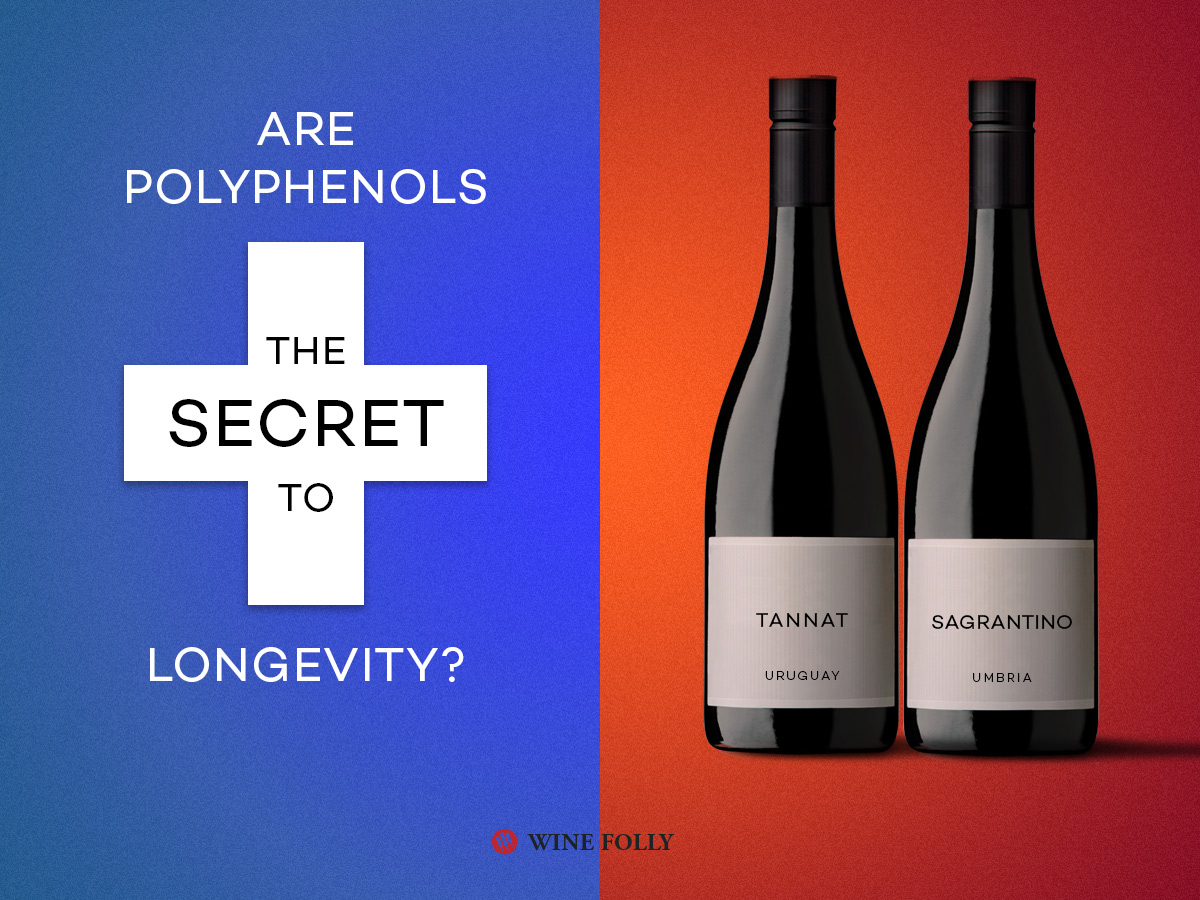Wine is delightful, but let’s not get confused and think it’s a healthy drink. It can be part of a well-balanced diet and lifestyle. If you’re relaxing in the backyard and sipping on a grown-up beverage, there’s something to be gained from knowing which wines are the best for your health.
Wine has a handy little compound called “polyphenols.” You won’t get superpowers from them, but they can help out your heart and even help you live longer. And that’s sort of super!
What Exactly Is A Polyphenol?
Nearly everything in wine, apart from alcohol and water, is a polyphenol. This includes tannins, pigments, aromas, resveratrol, procyanidins, and thousands of other plant compounds.
Of these polyphenols, the most abundant in wine for health reasons are Procyanidins. These inhibit cholesterol plaque in blood vessels, making wine heart-healthy.
Dr. Eric Rimm, a Professor at the Harvard School of Public Health, has examined hundreds of studies on alcohol and health.
“There’s no question that people who drink moderately have lower rates of heart attacks, lower rates of diabetes, and live longer.”
– Dr. Eric Rimm, Professor, Harvard School of Public Health (2013)
Of course, not all alcoholic beverages are created equally regarding health. Among spirits, beer, and wine, wine consistently offers the greatest health benefits.
The beneficial attributes of wine outplay all other types of alcohol when it comes to longevity. However, not all wines are created equal. Some wines have significantly higher amounts of “good stuff” in them.
What To Look for in “Healthy” Wine
Here are the traits that characterize wines that are better for you with respect to health:
- Wines that are “dry,” meaning they’re not sweet and have little to no carbs (sugar).
- Wines that are lower in alcohol (ideally, 12.5% ABV or less).
- Wines that have higher polyphenol content, particularly procyanidins.
Which Wines Have the Highest Polyphenols?
Polyphenols are found in the skins and seeds of grapes, so only wines made with skin contact (including red wines and orange wines) have elevated polyphenol levels. Certain grape varieties have more concentrations of Procyanidin. Most notably:
- Tannat: The wine of Madiran in South-West France that also grows in abundance in Uruguay.
- Sagrantino: A rare grape from Umbria, producing deeply-colored wines.
- Petite Sirah: Also known as Durif, it primarily grows in California.
- Marselan: A successful crossing between Cabernet Sauvignon and Grenache with very small berries that creates wines with intense deep purple hues. A rarity found in tiny amounts in France, Spain, China, Argentina, Brazil, and Uruguay.
- Nebbiolo: Nebbiolo is an important grape of Piedmont, Italy.
These grapes contain anywhere from two to six times as much polyphenol as other more popular varieties like Pinot Noir and Merlot. Concentrations of polyphenols are highest when the wine is young. Of course, many other variables are involved, including how the grapes were harvested and the wine was made. So, if you’re looking for a more straightforward answer, go for the taste.
What Do High Polyphenol Wines Taste Like?
The wines will have highly concentrated fruit flavors, higher acidity, and a bold, tannic finish. Most will have a darker color, so much so that you won’t be able to see through your wine glass.
The more bitter, the better.
High polyphenol wines are the opposite of smooth and supple: they’re robust, bold, and often described as astringent. The bitterness in wine directly correlates to the level of procyanidin in a wine. So, if you like a little bitterness in your life, you will love these wines!
Of course, wine isn’t the only food with high levels of polyphenols. Apples, beans, chocolate, grape seed extract (as a supplement), tea, and pomegranates are great alternatives to wine with higher polyphenols.
Great Wines for Sipping
Because these wines are perceived by most as “hard to drink,” you’ll find yourself drinking with more moderation. This isn’t a bad thing, considering the National Cancer Institute recommends men should have no more than two glasses per day and women no more than one glass (a glass is 5 oz). So, the next time you read “robust, bitter, and age-worthy” on a label, you might avoid your initial instinct to run the other way!


